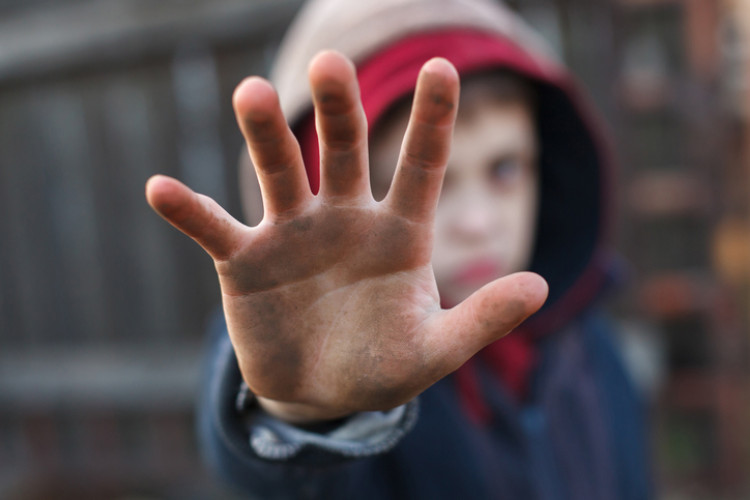What is salmonellosis?3x how: how does it arise, how does it manifest itself, how to get rid of it?

Salmonellosis is a very common diarrhoeal disease caused by intestinal pathogens - more specifically Salmonella bacteria. It is one of the most common and well-known infectious diseases of the digestive tract.
Article content
You also ask about its symptoms and how to protect yourself from it and how to get rid of it quickly.
The source of the infection is the diseased animal and its inadequately processed products.
The gateway is the human gastrointestinal tract, where the infection enters through the mouth.
Anyone can become infected at any time.
The most at-risk groups of people are young children and the elderly.
Awareness is the most basic preventive measure.
More than one case of salmonellosis has ended up in the infectious disease ward of a hospital. This diarrhoeal disease puts the patient at risk of dehydration. Young children, the elderly and sick individuals are most at risk.
Basic classification of salmonella
There are currently more than 2,300 known species of Salmonella.
However, only Salmonelosis enteritidis, Salmonelosis typhi abdominalis and Salmonelosis paratypi types A, B and C are pathogenic to humans.
Non-typhoidal salmonellosis
Non-typhoidal salmonellosis is a disease transmitted from animals to humans (zoonoses). The incubation period is 6-8 hours. As with most species, neonates and the elderly with an underdeveloped or weakened immune system or disease of the intestinal mucosa are most at risk.
Symptoms of non-typhoidal salmonellosis
The disease may be asymptomatic or with only mild diarrhoea with temporary excretion of the bacterium in the stool, thus becoming a source of infection. The more typical picture is of violent diarrhoea with normal brown colouration at the beginning. Later the colouration changes to greenish until the stool is completely green.
The onset is accompanied by a rise in temperature to around 39-40 °C. This gradually decreases over 48 hours.
Nausea, vomiting and crampy abdominal pain of severe intensity are also present. All this results in severe dehydration with disruption of the internal environment. The patient is weak, malaise, pre-collapse with a clinical picture of dehydration shock.
Extreme course of the disease
These are severe cases of dehydration in at-risk individuals.
It also causes other symptoms leading to shock and death. These include reduced blood sugar (hypoglycaemia), muscle cramps in the calves from mineral deficiency with fluid loss, cold sweaty skin, blue discolouration of the lips and fingertips (acral cyanosis), general muscle wasting (hypotonia).
This condition is accompanied by low blood pressure, high heart rate and increased respiratory rate. Very rarely, systemic infections are associated with involvement of various organs and organ systems with the presence of bacteria in the blood (septicaemia).
Transmission of non-typhoidal salmonellosis
The source of infection is vertebrates, which cause infestation in cattle and poultry. It can also arise from the faeces of infected rodents and birds or from artificially contaminated feed (fish and bone meal).
Infection is also spread to humans by contaminated food produced from these animals, such as meat, eggs, milk, cheese, mayonnaise, spreads, ice cream or contaminated water. This happens when they are not cooked properly, especially during warm periods.
Treatment of non-typhoidal salmonellosis
The mainstay is intensive rehydration (replenishment of lost fluids through persistent diarrhoea and vomiting).
The adjustment of mineral metabolism is also important, after which the patient's condition improves rapidly. Antibiotics are not recommended as a standard treatment for this type of salmonella infection. They even prolong the time it takes for the bacteria to be cleared from the digestive tract, the mucosa of which they also disrupt.
Suitable are drugs based on intestinal anti-infectives, which are used in the treatment of diarrhea with a probable infectious cause in the violation of the microbial intestinal microflora, or adsorbentia.
The typhoidal form of salmonellosis
It accounts for approximately 1 % of all salmonellosis. It occurs secondary mainly in people with another underlying diagnosis such as vascular disease, diabetes or immune deficiency.
Manifestations of typhoidal salmonellosis
The clinical picture is dominated by severe green diarrhoea with high fever, inappetence, vomiting and fatigue. The general condition is strikingly reminiscent of typhoid fever.
Abdominal pain, which is sensitive to touch, is particularly marked. An enlarged liver (hepatomegaly) or spleen (splenomegaly) may be palpated, but this is rare.
Transmission of the typhoidal form of salmonellosis
Transmission is similar to that of the non-typhoid type, i.e. from animal to human through inadequately prepared food. The most common types of the causative organism are Salmonelosis cholerae sius, Salmonelosis typhi muriun, Salmonelosis enteritidis, Salmonelosis Dublin and others.
Treatment of typhoidal form of salmonellosis
Treatment differs significantly from non-typhoidal Salmonella infections in terms of tablets. The mainstay is the administration of antibiotic therapy based on the laboratory-determined sensitivity of the bacterium to specific antibiotics.
Antibiotics are taken longer to prevent recurrence (return) of the disease. Complications of dehydration are attempted to reverse by fluid intake and adequate mineral supplementation.
Organ-localized form of salmonellosis
These forms cause various systemic infections without previous diarrhoea. They manifest themselves in the organ that is attacked by the bacterium. For this reason, a wide variety of symptoms are observed in this type.
Manifestations of the organ-localized form of salmonellosis
The manifestations vary depending on which organ is affected by the bacteria.
We include here banal infections of the gallbladder and biliary tract, inflammation of the urinary system and kidneys as an inflammatory complication of salmonella infection.
More complex are diseases of the spleen and liver. When the lung tissue is attacked, pneumonia occurs.
A more serious condition occurs with infection of the meninges of the brain, with the development of meningitis. However, involvement of the meninges is very rare, as is the source, which is usually a snake. Salmonella infection also rarely appears on the heart and on the heart valves, which can cause heart rhythm disturbances.
Transmission of the organ-localized form of salmonellosis
Transmission is possible through infected blood, faeces, pus from an ulcer (abscess) but also other body fluids with the presence of this bacterium.
Treatment of the organ-localized form of salmonellosis
The first is the patient and the treatment of the patient as a whole. The overall therapy is aimed at killing the causative bacterium with an antibiotic.
The second pillar focuses on the affected organ and its proper function. The treatment is symptomatic, associated with the control of symptoms that make the patient uncomfortable or the removal of a disease entity, such as a skin ulcer, which causes the patient pain by its presence.
How can we get infected with Salmonella?

For each type of salmonella infection, the transmission of the disease is briefly described above. These types have one common denominator, namely the source of infection.
This is vertebrates, which include pigs, poultry, cattle, birds, reptiles, and rodents.
Transmission occurs through direct contact with an infected animal.
The risk group consists mainly of breeders and people involved in the sale of breeding animals. When keeping pigs, it is important to take care of the correct food, general care and housing of the animals, which reduces the risk of the animals becoming infected. However, this does not preclude anyone else coming into contact with them.
More likely than contact with an animal is contact with livestock products contaminated with salmonella. These are the products that are commonly bought in shops by all of us. They include meat products, offal and meat products packaged in casings.
Increased caution should be exercised with eggs and egg products such as mayonnaise, tartar, creams, snow whipped from egg whites or undercooked eggs.
According to the latest findings:
Salmonella bacteria are not found inside the egg, as previously thought.
They are found on the shell.
When the egg is broken during cooking, they get inside.
The egg becomes infected with salmonella bacteria.
Last but not least, this includes milk and dairy products such as cheese, bryndza, yoghurt, spreads, butter ice cream, etc. Other secondary contaminated foods are also dangerous.
Livestock products are dangerous to humans in their raw state, when bacteria are still present in the infected food. The danger is also high when food is stored incorrectly (room temperature), which doubles the number of bacteria on the surface.
This problem increases enormously during the summer months.
Salmonella has a very good ability to multiply rapidly, so it is important to stop this reproduction. This is possible at temperatures below 10 °C. These are in refrigerators, freezers or freezer boxes.
Further multiplication occurs when food is not cooked properly. Unsuitable conditions can kill it.
Salmonella multiplication stops at temperatures above 45 °C. Restaurants, fast-food outlets and many factory kitchens, where cooking is done in large numbers for several people, are a problem today.
To a small extent, person-to-person transmission via the faecal-oral route (faeces-to-mouth) is also possible with poor personal hygiene. This most often occurs in households of socially disadvantaged individuals with poor hygiene habits.
Salmonella bacteria are excreted from the body of the sick person through bodily fluids and faeces, which are equally a source of infection. If hands are not washed or not washed properly, for example after defecation, the bacteria remain on the hands and objects with which the person has come into contact.
Secondarily, when these objects come into contact with another person who is still healthy, the latter may become infected.
What is the best way to avoid salmonella infection?

- By minimising contact with infected animals.
They can be encountered mainly in villages, but also in various children's parks, circuses or zoos. Children are particularly at risk (stroking, feeding).
After contact with an animal, wash your hands thoroughly and do not put them in your mouth. - Proper food storage and keeping food out of the fridge for as short a time as possible.
Defrosting time should be reduced, either by defrosting in a microwave oven or with lukewarm and warm water. - Food preparation should be sufficient in time and temperature.
Public catering units cannot be completely avoided nowadays. If possible, prefer to eat from your own kitchen. - Good hygiene habits.
Regular hand washing is essential, as thousands of bacteria other than salmonella are found on these hands.










